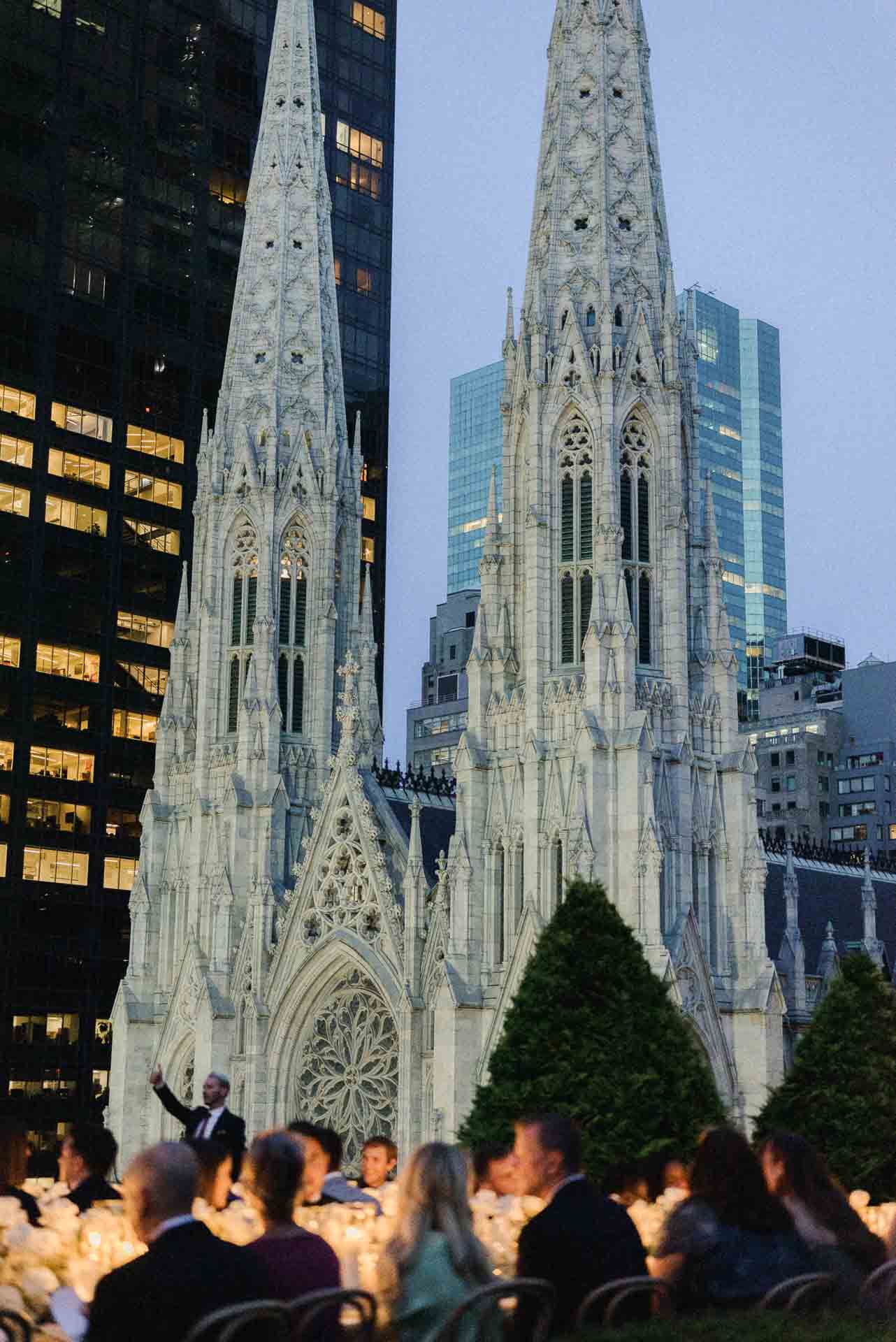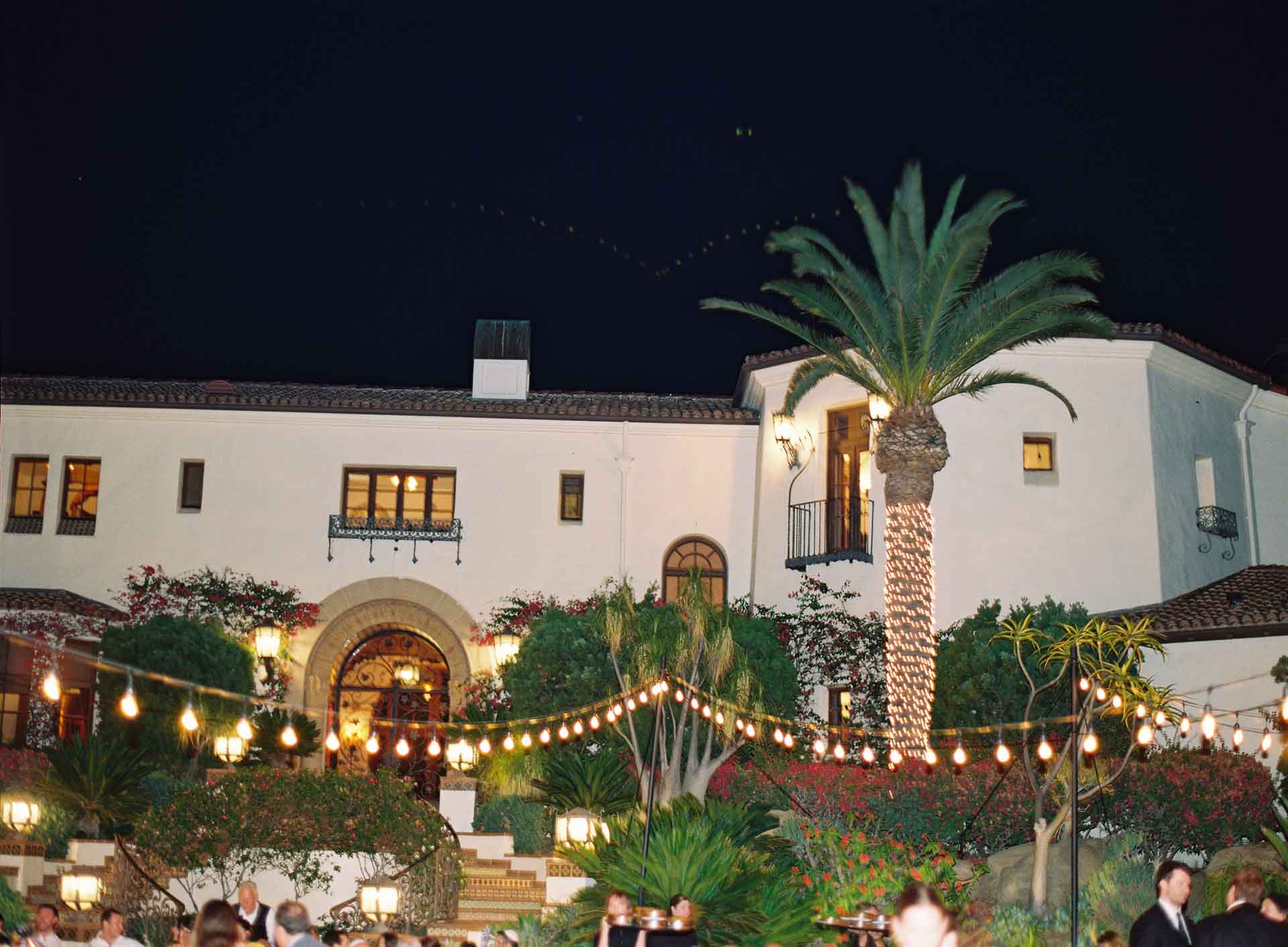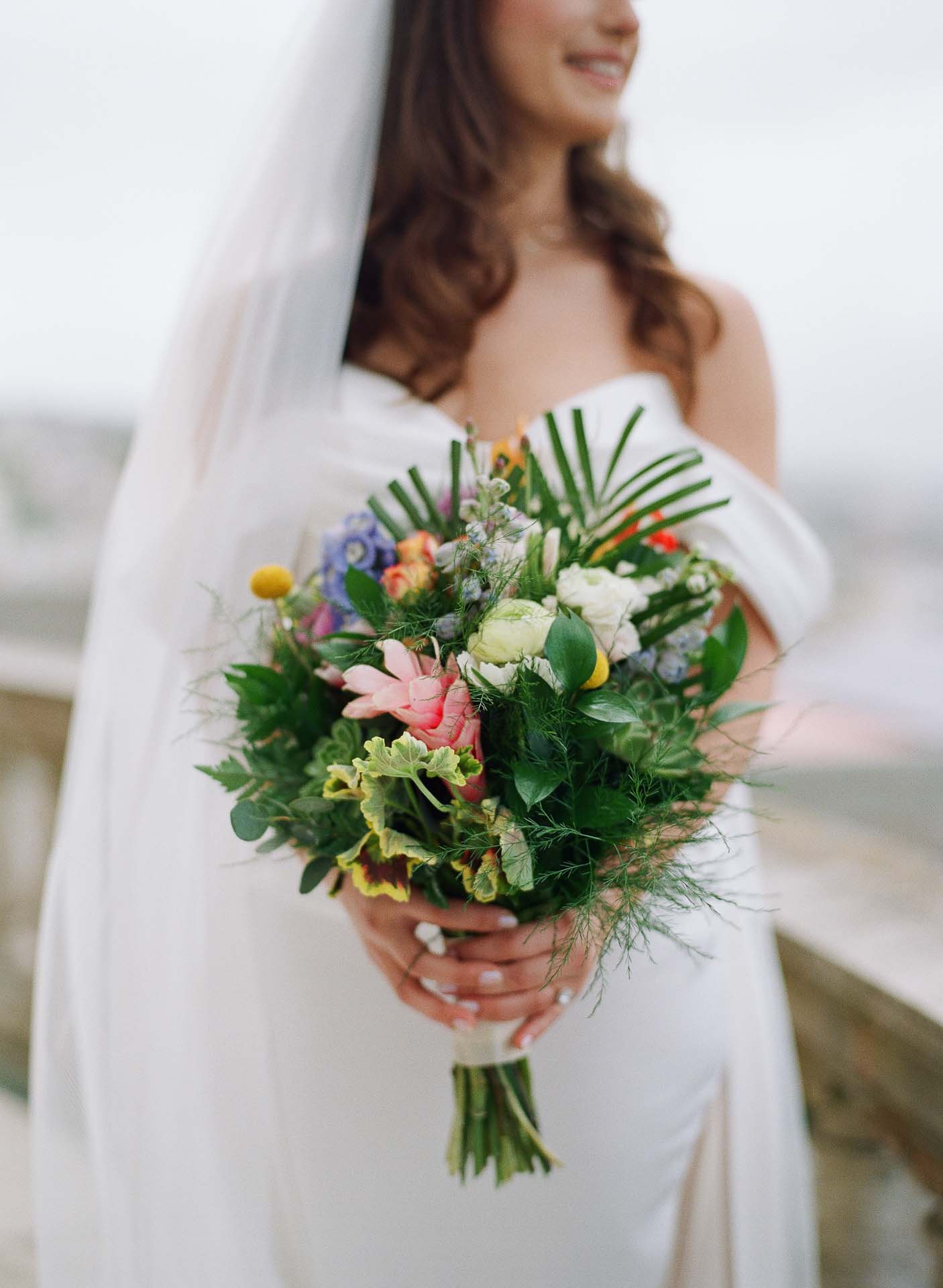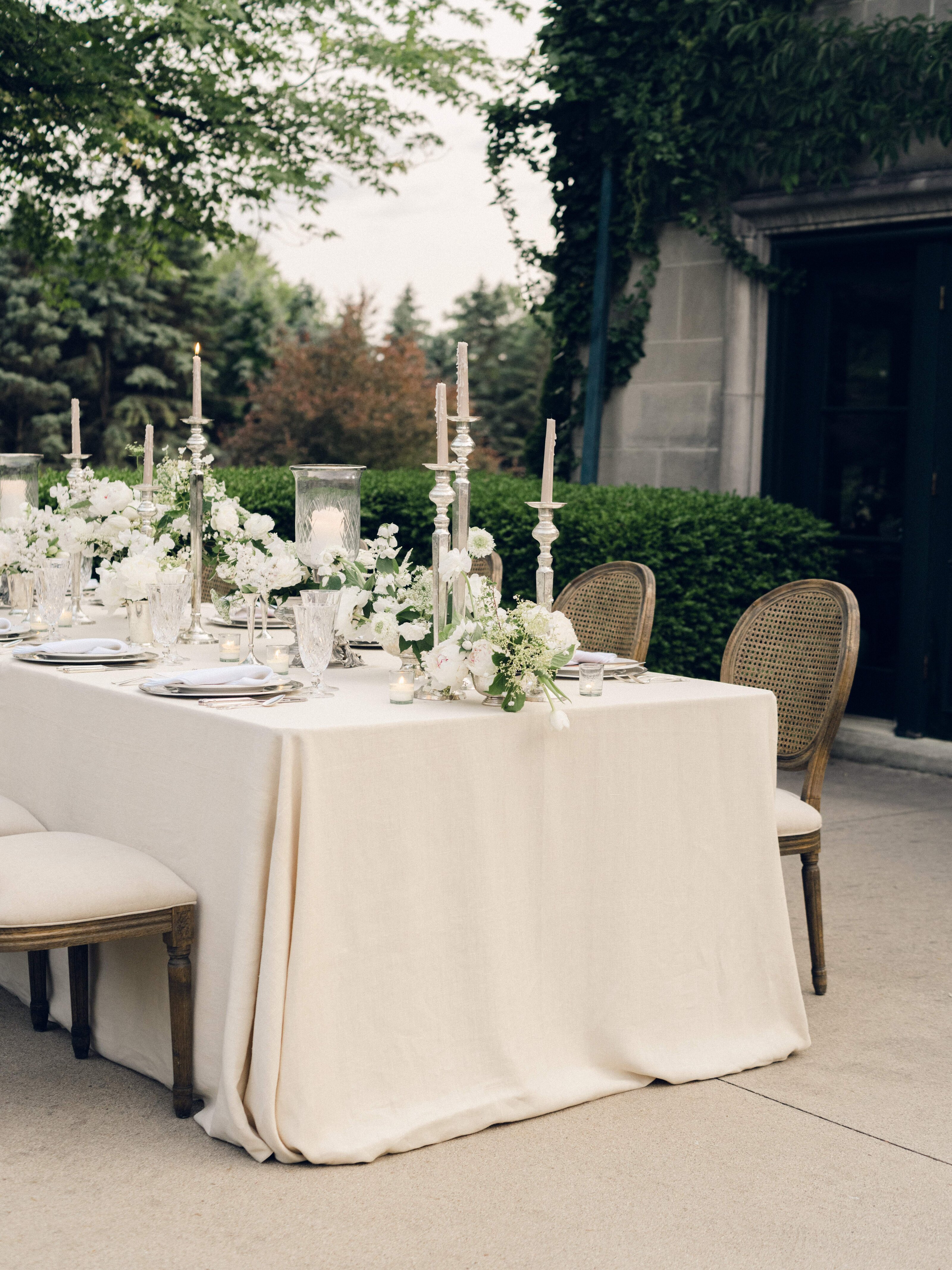
When planning your dream wedding, one of the most essential elements is your timeline. A rushed or poorly organized timeline can lead to stress, missed moments, and a less enjoyable day. But with the proper planning, you can ensure your wedding day flows smoothly, and you have time to savor every moment. Here, we share five essential secrets to creating a relaxed wedding day timeline that will save you from the chaos and help you make the most of your big day.
Start With a Well-Defined Pre-Wedding Schedule
The foundation of a successful wedding timeline begins long before your guests arrive at the venue. From getting ready to your first look, having a clear and well-organized pre-wedding schedule is critical.
Getting Ready Time: Giving yourself plenty of time to relax and enjoy the getting-ready process is essential. Typically, 4-5 hours before your ceremony, depending on your bridal party size, works well. If you’re planning a first look, you’ll want to prepare for a bit of extra time for photos before the ceremony begins. This helps ensure everything flows smoothly, giving you time to savor the moment without feeling rushed. The key is balancing your preparation time to enjoy the morning without stress while allowing enough time for all the beautiful moments you’ve planned.
Travel Time: Consider enough travel time if your wedding is in a different location or your ceremony and reception are at separate venues. Unexpected delays can happen, so allow for a buffer of 15-30 minutes to avoid any last-minute panic.
The key is creating a relaxed atmosphere, ensuring ample time to prepare and focus on the day’s excitement.
Hire a Wedding Planner: It’s Essential for Your Dream Day
When planning your wedding, especially if you envision a relaxed and stress-free experience, hiring a professional wedding planner is one of the best decisions you can make. It’s not just a luxury; it’s a necessity. A wedding planner will help you navigate the complex details, keep everything on track, and ultimately ensure that your wedding day is everything you’ve dreamed of—without the stress of managing all the moving parts yourself.
A skilled wedding planner is your go-to expert for everything from coordinating vendors and managing timelines to troubleshooting last-minute changes. They are seasoned professionals with experience managing weddings of all sizes and styles. When you hire a wedding planner, you get someone dedicated to bringing your vision to life while ensuring things run smoothly behind the scenes. This means you can focus on enjoying your big day, knowing that every detail is being handled.
A wedding planner also plays a crucial role in working with your photographer to create a well-organized photography timeline. With so many elements to your wedding day—pre-ceremony moments, portraits, ceremony, reception, and more—a wedding planner ensures everything fits together without feeling rushed. They help schedule the ideal moments for essential photos, ensuring you get those perfect shots, whether you dream of romantic golden hour photos or candid moments during the reception.
Many wedding planners are so well-versed in the flow of a wedding day that they can anticipate issues before they arise, saving you time, money, and frustration. They are also experienced in budgeting, ensuring you get the most out of every dollar without sacrificing the quality of your vendors or your vision.
Hiring a wedding planner lets you remain calm and focused on the bigger picture: your celebration. While it’s natural to want to be hands-on with your wedding planning, having a professional responsible for the logistics can make all the difference. This support becomes even more crucial for planning a destination wedding or a more significant event.
So, if you want your wedding day to go off without a hitch and have the opportunity to truly enjoy the moments as they unfold, hiring a wedding planner is a decision you won’t regret. They are your partner in creating the day of your dreams while keeping things running smoothly from start to finish. Creating a Relaxed Wedding Day Timeline: The Key to Enjoying Your Big Day
Prioritize Key Moments and Build in Buffer Time
Many precious moments will be during your wedding day, but some deserve more time than others. By carefully prioritizing these critical moments, you can ensure that everything flows smoothly without feeling rushed.
Prioritize Moments That Matter: Your first look, vows, and reception entrance are the main highlights of your wedding day. These moments deserve to be captured thoughtfully without distractions. Give yourself enough time for each without cramming too many activities into your schedule.
Buffer Time is Crucial: The best way to avoid feeling rushed on your wedding day is to plan for buffer time between events. Whether it’s 15 minutes between hair and makeup or a little extra time between the ceremony and the reception, building buffer time helps accommodate any unexpected delays without causing stress.
Bridal magazines like Brides emphasize the need to align your timeline with both your photographer’s and planner’s schedules to ensure everything goes smoothly, from getting-ready shots to the post-ceremony portraits:
Here
Don’t Skip Downtime – It’s Essential
Weddings are filled with excitement, but it’s just as essential to incorporate some downtime throughout the day. Without it, the day can feel overwhelming for you and your guests.
Couple’s Downtime: Whether it’s a quiet moment together after the ceremony or a few minutes alone before the reception, downtime allows the couple to decompress and truly enjoy the experience. It’s also an excellent opportunity to take intimate couple shots with your photographer.
Guest Downtime: Weddings can also be a lot for guests to absorb. Consider incorporating a cocktail hour where guests can mingle, relax, and enjoy a drink before entering the reception. This allows everyone to relax and enjoy the celebration at their own pace.
Plan for an Efficient Photography Session Without Sacrificing Your Vision
Photography is one of the most essential elements of your wedding day, so it’s important to ensure your photographer has the time to get the perfect shots.
Your wedding day is a beautiful whirlwind of emotions and precious moments. As your photographer, I capture all of these memories in a way that aligns with your vision—while ensuring everything flows seamlessly. But how do we balance your dream wedding photos with the need to keep things moving smoothly? The secret is in collaboration and planning.
A well-structured timeline is the foundation of a relaxed, enjoyable wedding day. But here’s the good news: you don’t have to do all the heavy lifting. As a wedding photographer, I work hand in hand with your planner to create a timeline that allows for the perfect balance of portraits, candid moments, and fun while ensuring there’s enough time for everything to unfold naturally. My goal is to capture the essence of your day without ever feeling rushed.
With the support of a skilled photographer and planner, you don’t have to worry about how the day will unfold. They’ll take the time to get to know your vision—what’s important to you, what moments matter most—so that the photography session feels relaxed and enjoyable rather than like another task to check off. It’s all about capturing the special moments you want while leaving space for the unexpected beauty of a wedding day.
Time-Saving Tips for Your Wedding Photography Session
The first step in creating an efficient photography timeline is ensuring you have enough time for the photos that matter most without sacrificing your vision. Here’s how we achieve this:
1. Prioritize Your Must-Have Photos
As your photographer, I’m always happy to discuss the key moments you want to capture, such as your first kiss, grand entrance, or a tender moment with your family. Together with your planner, we’ll ensure these must-have moments are given the time and attention they deserve.
By clearly defining your top priorities, we can build the timeline to ensure those essential shots are achieved without feeling rushed. There’s no need to stress over perfecting everything—tell us what’s important, and we’ll handle the details.
2. Allocating Time for Candid Moments and Posed Shots
The beauty of your wedding is in both the posed portraits and the candid moments that unfold throughout the day. I work with your planner to make sure there’s time for both. Whether it’s a quiet moment during your vows or the joy of your first dance, candid moments can be just as stunning as posed ones.
By planning for these moments ahead of time, we’ll ensure you get both the classic portraits you envision and those raw, unposed moments that tell the real story of your day.
3. Minimizing Transition Time Between Locations
Weddings often take place across multiple locations, whether it’s the ceremony venue, a photo location, or the reception. A significant element of stress on your wedding day can come from inefficient transitions between venues. But don’t worry—this is where your photographer and planner come in.
We’ll collaborate to create a timeline that minimizes travel time while ensuring you don’t feel rushed between locations. Whether organizing transportation or choosing nearby photo spots, we keep things moving smoothly and efficiently.
4. Making Time for Golden Hour Photos
Golden hour—just before sunset—offers the most magical lighting for portraits. By planning for golden hour photos, we ensure your wedding photos have that soft, romantic glow you’ve always dreamed of. Working closely with your planner, we’ll find the best time for these photos, ensuring you have the time and space to enjoy them without feeling rushed throughout the day.
5. Consider a First Look
A first look offers some significant advantages, particularly regarding your photography session. Here are some key reasons couples love this moment:
- More Time for Photos: You can get some of the most influential photos before the ceremony begins by scheduling a first look. This means you won’t have to rush through portraits right after the ceremony when everyone is eager to move on to the reception. It also frees up time for more candid moments during the day so you can focus on enjoying your celebration.
- Perfect Lighting: The soft, natural light often occurring earlier in the day is ideal for portraits. With a first look, you can take advantage of this lighting, ensuring your photos are as flattering and beautiful as possible.
- A Calm, Intimate Moment: A first look gives you and your partner a private moment to see each other before the excitement of the ceremony begins. It’s an emotional, beautiful time that sets a calm tone for the rest of the day.
- More Time with Guests: By getting some of the formal photos out of the way earlier, you’ll have more time to spend with your loved ones after the ceremony. This makes the day feel more relaxed, allowing you to fully enjoy your wedding without feeling constantly posing for pictures.
Collaborating With Your Wedding Planner for a Relaxed Wedding Day Timeline
While you’re busy with other details of your big day, I work closely with your planner to ensure that everything—from the ceremony to the reception—is perfectly timed for your photography session. The beauty of this collaboration is that it allows you to relax, knowing that your photographer and planner are in sync to create a seamless experience.
From the moment you wake up to the last dance of the evening, we’ll work behind the scenes to keep the day running smoothly. Together, we’ll map out a timeline that covers every detail—from family portraits to golden hour shots—without overwhelming you.
A wedding planner is invaluable when it comes to keeping things on track. As your photographer, I complement their efforts by helping structure the day’s photography portions. When we work together, we ensure that your wedding day will be a relaxed, enjoyable celebration where you can focus on your love story. At the same time, we take care of the details.
Creating Your Wedding Photography Vision While Staying on Track
Your wedding day should reflect your unique vision. The best photos come when you feel at ease, so ensuring your timeline reflects that is paramount. I’ll work with you to capture the images you’ve always dreamed of through a fine-art editorial style, candid moments, or an editorial mix.
I recommend discussing your vision with your photographer well in advance—whether you prefer a documentary style or a more styled, editorial look. Once we know what matters most to you, we’ll ensure that the timeline allows for these moments while leaving room for spontaneity.
Remember, a relaxed timeline doesn’t mean sacrificing your vision. It’s about working together to find a way to achieve both beautiful photography and an enjoyable day.
Collaborating with your planner and photographer ensures that every precious moment of your wedding day is beautifully captured. I work alongside your planner to create a photography timeline that aligns with your vision and allows for the natural flow of your day. With careful planning, you can enjoy every moment without worrying about the details and have stunning photographs to treasure forever.
Martha Stewart Weddings offers advice on wedding day planning, including timelines for everything from engagement parties to after-wedding events. Their insights into how to prioritize tasks and adjust the schedule to suit your needs can be incredibly valuable. You can explore more of their suggestions on creating a balanced wedding timeline here:
FAQ Section
How much time should I allow for wedding photography?
For a non-intimate wedding, a minimum of 10 hours is ideal. This gives us ample time to capture the pre-ceremony details, the ceremony, family portraits, couple portraits, and the reception—without feeling rushed.
Can I achieve both editorial and documentary-style photos in one wedding?
Yes! By carefully planning the timeline and coordinating with your photographer, we can capture editorial shots (carefully styled, posed portraits) and documentary-style moments (candid, natural moments) to give you a perfect balance.
How do you work with my wedding planner?
I work closely with your wedding planner to ensure your photography timeline fits seamlessly into the wedding schedule. Together, we’ll plan for key moments while allowing enough time for flexibility and capturing candid memories.
Is golden hour photography worth it?
Absolutely. Golden Hour provides the most flattering and romantic lighting for photos. By including it in the timeline, we can ensure you get that soft, dreamy light that makes your wedding photos magical.
What should I include in my shot list?
We’ll work together to create a personalized shot list highlighting the moments that matter most to you, whether it’s family portraits, first-look photos, or details of your dress. I’ll ensure we schedule time for these critical moments while leaving space for beautiful, spontaneous shots.
By following these five essential tips, you can design a wedding day timeline that flows effortlessly and keeps the focus on what matters—celebrating love, connection, and joy. A relaxed timeline allows you to savor every moment, from the first look to the last dance. Remember, this is your day—take the time to enjoy it.
How early should I start planning my wedding timeline? It’s best to start at least six months before your wedding. This allows you ample time to adjust your schedule as needed while ensuring all vendors and participants are informed in advance.
What is the best time to schedule the ceremony for a relaxed timeline? Scheduling your ceremony in the early afternoon, around 2 or 3 PM, gives you plenty of time to prepare without feeling rushed. It also allows for a smooth transition into the reception without running out of time before sunset for those golden hour photos.
Can I reduce my timeline to save money? While trimming down your wedding timeline might seem like a way to save money, it’s essential to maintain quality over quantity. Hiring a professional photographer who can capture all the vital moments is critical. Rushing through the day will only leave you with incomplete memories.
How much buffer time should I include in my wedding timeline? The best practice is a 15-30-minute buffer between significant events like hair and makeup, transportation, and photography sessions. This helps account for delays or last-minute adjustments, ensuring your day flows smoothly.
If you have a wedding coming up or any questions you’d like to discuss, feel free to reach out anytime through my contact page.
+ view the comments







